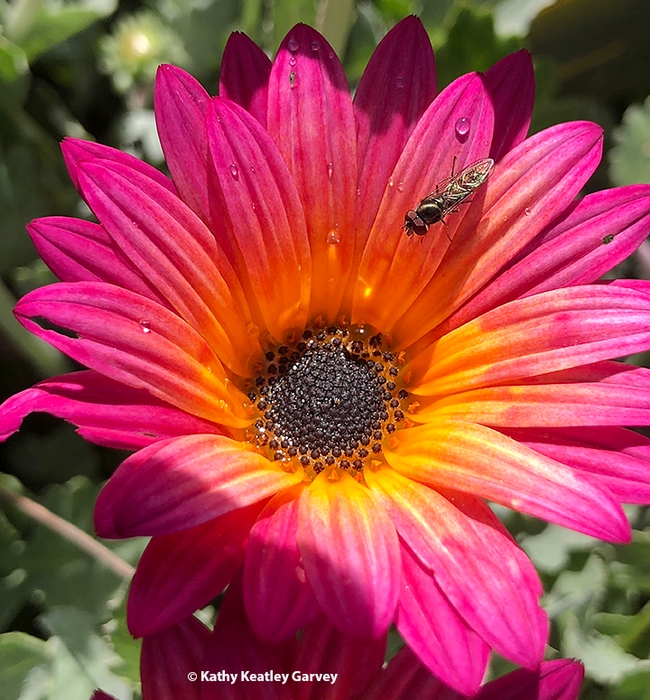Who doesn't like "Pink Sugar?"
No, not the sweetener. The brilliantly colored Arctotis "Pink Sugar," also known as a pink African daisy.
"The genus name Arctotis is derived from Greek words 'arktos', which means "a bear" and 'otos' meaning "an ear" with the implication that the scales of the flower and fruit pappus look like the ears of a bear," according to the San Marcos Growers. "The reason for the specific epithet is not clear with the possibility that it come from the Greek word 'stoechas' that refers to a type of mint coupled with 'folia' meaning leaf."
"Pink Sugar" blooms from November through April, and if you're lucky, you'll see a butterfly, bee or a syrphid fly foraging on it.
This blossom below (image taken in Vacaville) drew a syrphid fly.
Syprhid flies, also known as "hover flies" or "flower flies" are good pollinators and predators: many of them prey on aphids and mealybugs. Scientists estimate that there are more than 6200 species of syrphid flies in the world, and more than 3000 in California alone.
They're often mistaken for honey bees.
Syrphid flies are easily distinguished from honey bees. Among the differences: (1) honey bees don't hover, (2) syrphids have only one pair of wings, while honey bees have two (3) syrphids have short, stubby antennae, while honey bees have long, bent antennae called genticulate antennae and (4) syrphids belong to the order Diptera, while honey bees are in the order Hymenoptera.
Maybe we should call a syrphid fly "an honorary bee."
Attached Images:
